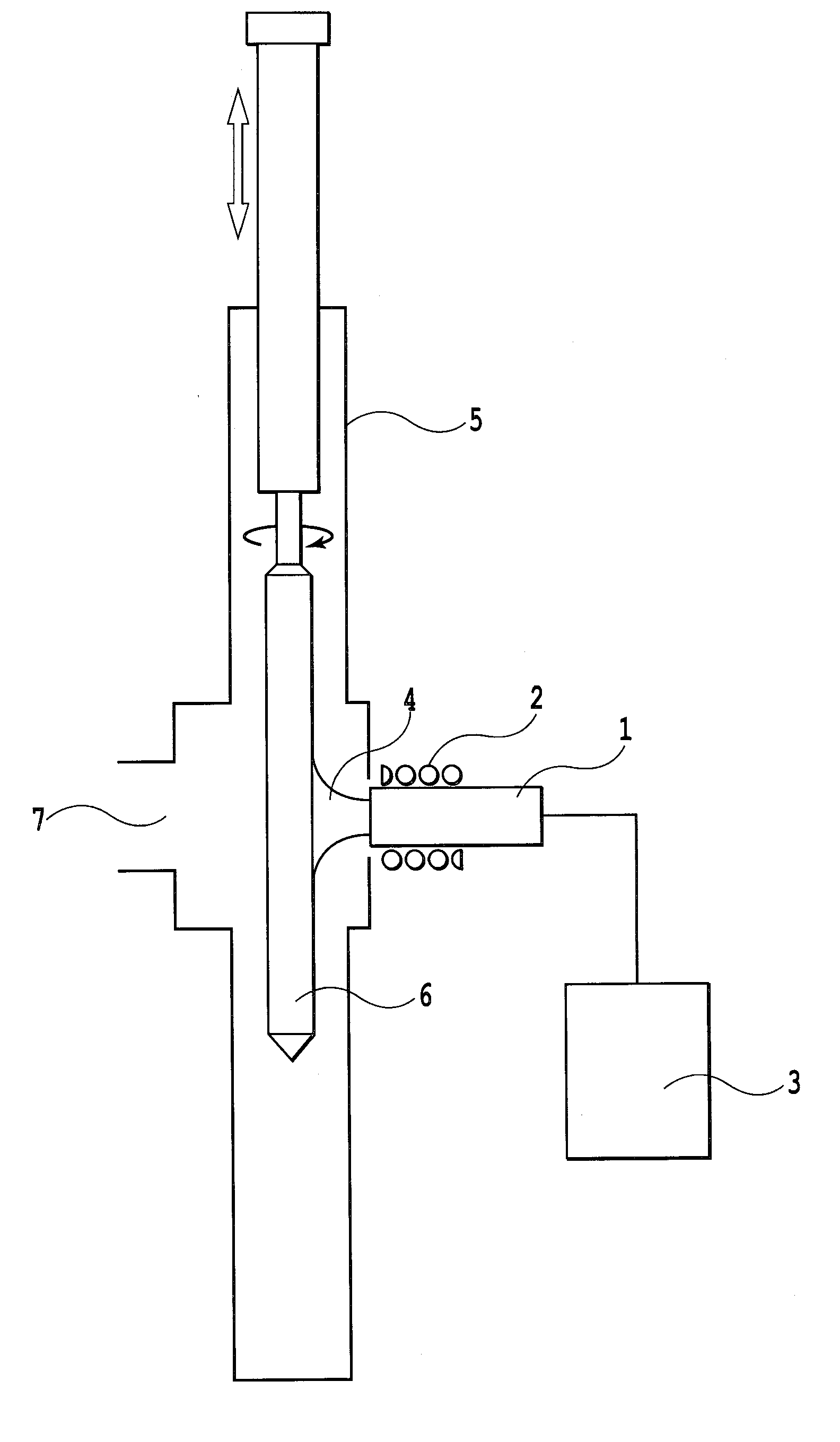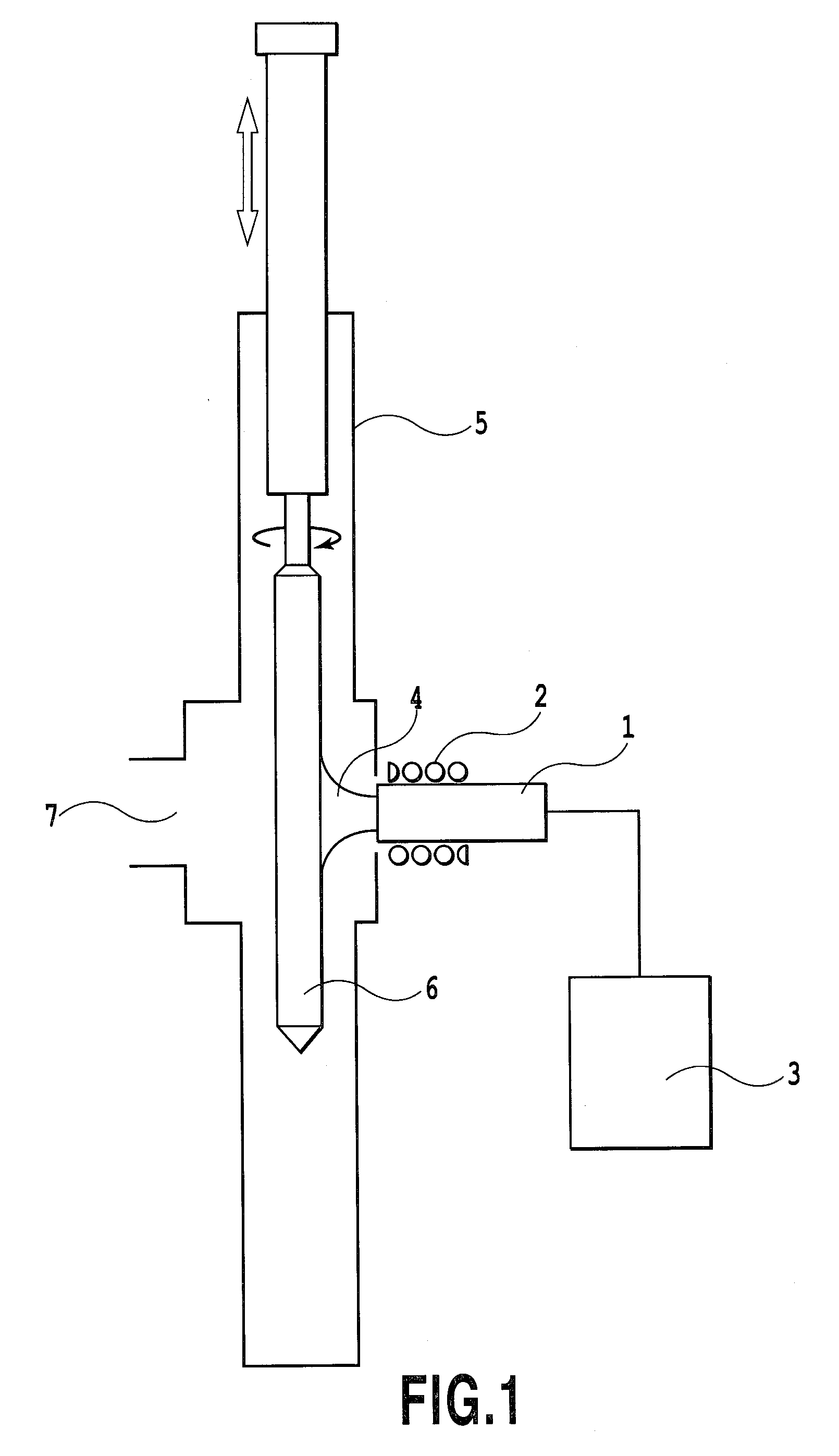Method of manufacturing an optical fiber preform using a high frequency induction thermal plasma
- Summary
- Abstract
- Description
- Claims
- Application Information
AI Technical Summary
Benefits of technology
Problems solved by technology
Method used
Image
Examples
example 1
[0037]A fluorine-doped silica glass layer was deposited onto a silica glass rod having a 50 mm outer diameter and a 1100 mm length by using the plasma torch 1. The relative moving speed between the plasma torch 1 and the target 6 in the forward direction was set at 75 mm / min. Silicon tetrachloride and silicon tetrafluoride, as a glass raw material and a source of fluorine, as well as argon and oxygen gases were fed to the plasma torch 1. The electric power to be supplied to the plasma torch 1 was set at 50 kW, which is a lower limit power required for vitrifying the deposited layer.
[0038]The relative moving speed between the plasma torch 1 and the target 6 in the backward direction was set at 500 mm / min. Argon and oxygen gases were fed to the plasma torch, while silicon tetrachloride and silicon tetrafluoride, as a glass raw material and a source of fluorine, were not fed to the plasma torch 1. The electric power to be supplied to the plasma torch 1 was set at 8 kW, which is a lower...
PUM
| Property | Measurement | Unit |
|---|---|---|
| Speed | aaaaa | aaaaa |
| Frequency | aaaaa | aaaaa |
| Refraction | aaaaa | aaaaa |
Abstract
Description
Claims
Application Information
 Login to View More
Login to View More - Generate Ideas
- Intellectual Property
- Life Sciences
- Materials
- Tech Scout
- Unparalleled Data Quality
- Higher Quality Content
- 60% Fewer Hallucinations
Browse by: Latest US Patents, China's latest patents, Technical Efficacy Thesaurus, Application Domain, Technology Topic, Popular Technical Reports.
© 2025 PatSnap. All rights reserved.Legal|Privacy policy|Modern Slavery Act Transparency Statement|Sitemap|About US| Contact US: help@patsnap.com



